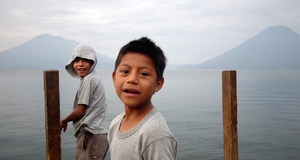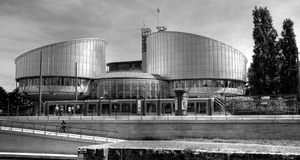From Cornell International Affairs Review VOL. 1 NO. 2Justice: Evasive and Amorphous
IN THIS ARTICLE
KEYWORDS
With mass atrocities ongoing in Darfur and past atrocities yet to be addressed, the question of how to achieve accountability for human rights violations in the context of post-conflict society has never been a more pressing concern. But justice exists in many forms and requires more than, and possibly something other than, the criminal prosecution of perpetrators. Justice can encompass, depend on, and affect other elements, such as political transition, democracy consolidation, institutional reform, long-term human rights protection, judicial capacity-building, and interpersonal reconciliation. The past several decades have witnessed varying approaches to justice which met varying degrees of difficulty and success. This paper analyzes three different pathways taken to achieve justice: truth commissions; hybrid courts and a truth and reconciliation commission; and a combination of an ad hoc international criminal tribunal, national criminal courts, and community-based local courts. I will argue that international support or reinforcement, which is usually necessary, cannot help without proper integration into national or domestic mechanisms and that where nations elect to hold truth commissions over trials, international pressure and assistance must follow to ensure that the commissions’ recommendations are acted upon. Introduction to Three ApproachesIn Chile, the 17-year military dictatorship of General Augusto Pinochet left more than 3,000 people dead and missing.1 Disappearance, the prevalent form of human rights abuse in Chile, was rationalized by those in power as necessary for national security but became “a license to torture and murder with impunity.”2 El Salvador’s 12-year civil war between the government and left-wing guerrillas in the 1980’s and 1990’s resulted in more than 70,000 deaths and mass human rights violations.3 Following these decades of violence, the Truth and Reconciliation Commission (Rettig Commission) in Chile, and the Commission on Truth in El Salvador were both created to investigate and advise, but neither was granted prosecutorial or judicial powers. They were, however, allowed to transmit their findings to the courts for appropriate legal action. Yet the commissions themselves described their respective judicial systems as deficient or implicated them in cover-ups. Furthermore, both countries had amnesty laws in place.4 Thus the commissions’ mandate essentially only entailed investigation and recommendation. In 1999, the people of East Timor voted to separate from Indonesia. In the period before and after the referendum, an estimated 70% of government infrastructure was destroyed, 60,000 houses were burned, 500,000 civilians displaced, 1000-2000 victims killed, and hundreds of women raped, as part of the Indonesian government and military’s policy of systematic violence to prevent and punish participation in the plebiscite.5 The United Nations Transitional Administration in East Timor (UNTAET) soon after took charge and was mandated with establishing a process of accountability for significant violations of international humanitarian law.6 Hybrid courts were chosen as the means because local judicial capacity was lacking and no international court existed to function in place of the weak domestic court system. UNTAET decided that panels comprising two international judges and one East Timorese judge would try serious crimes;7 prosecutors and investigators were drawn from other countries and the local population. The concept of hybrid courts “envisages international standards applying throughout, and full respect for due process and the rights of the accused, while at the same time honouring a State’s need to retain sovereignty through adequate involvement in the process.”8 However, designing and implementing a scheme tailored to the needs and capacities of the host nation and which simultaneously meets international standards proved to be extremely challenging.9 The situation was complicated by two other simultaneous judicial processes, Indonesia’s ad hoc Tribunal in Jakarta based on the ICC and the East Timorese Commission for Reception, Truth and Reconciliation, which has no powers to consider or grant amnesty for serious atrocities.10 In Rwanda, some 800,000 Tutsi and politically moderate Hutu were murdered within 100 days.11 The International Criminal Tribunal for Rwanda (ICTR), whose jurisdiction spans only the events of 1994, has been criticized for its invisibility and inaccessibility to the Rwandan people12 as well as its inability so far to present a comprehensive and cohesive history of the genocide and preceding events. The national courts presented the same problems of inaccessibility, as the proceedings of their trials, held in provincial capitals, are not broadcast over radio or television.13 Thus, to expedite and improve the process of trying the perpetrators of genocide, Rwanda’s Transitional National Assembly passed the gacaca14 law in January 2001, and since then about 11,000 gacaca tribunals have been established throughout Rwanda.15 Each tribunal comprises nine lay judges elected by the local community and briefly trained before the trials commence. Nicholas Jones describes the national court system as “classical trial method justice” and the gacaca “a modernized version of a traditional Rwandan dispute resolution mechanism.”16 Together, the ICTR, the Rwandan National Judiciary, and the gacaca courts are in the process of adjudicating approximately 750,000 perpetrators of genocide, with Rwandan military courts and international third-party trials operating peripherally.17 Contribution to Justice:For Perpetrators and For VictimsThe major premise for truth commissions centers on their ability to discover and disclose information on the violence which took place. As Mark Ensalaco writes, a truth commission investigation can “end the anguished uncertainty of the families of the disappeared” and uphold Additional Protocol I to the Geneva Convention, which guarantees the right of families to know the fate of their members.18 However, this supposed merit of truth commissions does not always hold up in practice. For example, although the Chilean Rettig Commission offered its report as a legal basis for determining the status of disappeared persons and reached definitive conclusions on 2759 out of the approximately 3400 (957 involving the detained-disappeared) cases of violence it investigated, it only looked into cases involving deaths and consequently omitted tens of thousands of cases of torture, forced exile, and other significant human rights violations.19 In El Salvador, the Truth Commission only reported on 33 “symbolic cases” out of the 22,000 which were brought before it.20 However, the Rettig Commission did help ensure material compensation for victims: its reports, with the force of a final, legal determination, served as the basis for surviving families’ property and inheritance claims and application for social security, health, educational, and housing benefits.21. The Salvadoran Truth Commission likewise called for, in less detail, material compensation to the victims of violence. Further, the commissions’ recommendations led to “a measure of punishment” in both countries.22 In El Salvador, military officials, public officials, and judges identified by the Truth Commissions were penalized with dismissal or harm to personal reputation and to institutional prestige. Even in Chile, where dismissal of military officers has not been possible, the commission report’s “indictment of the military” has undermined the armed forces’ authority and credibility. The Chilean military attempted to rebut the Rettig Commission’s report in their official response but largely failed, and the published record of their violations of international humanitarian law was left standing.23 Thus, although the Rettig Commission and Salvadoran Truth Commission did not prosecute individuals, their reports directly and indirectly resulted in some consequences for the perpetrators’ actions. The Ad Hoc Human Rights Court on East Timor in Jakarta has not contributed at all to bringing human rights abuses to account, largely due to “a lack of political will in Jakarta to prosecute senior Indonesian civil and military officials responsible for the violence.”24 In the cases decided thus far, all nine military and police personnel have been acquitted; the only two persons convicted are East Timorese.25 Meanwhile, the Serious Crimes enterprise26 in the District court of Dili created under UN auspices has under-performed and been criticized for bad leadership and poor management. Those involved in running this hybrid court have found the scheme immensely challenging, “with minimal resources and apparent lack of institutional support.”27 According to Linton, the International Criminal Court (ICC)’s legal regime was basically “grafted” onto a district court in a severely destitute country with “a dysfunctional criminal justice system with novice legal personnel.”28 As a result, this judicial mechanism has been largely ineffective. A serious lack of human and material resources has impeded the work of the Serious Crimes Investigation Unit; investigations of the overwhelming majority of crimes against humanity and war crimes committed during 1999 have been delayed or prevented. A number of detainees have been released on grounds of insufficient evidence.29 East Timor’s hybrid process is also weak because the Dili court’s main targets are in Indonesia and thus outside of its mandate of operation.30 In Rwanda the new Tutsi-dominated government adopted a policy of “maximal accountability” for genocide and crimes against humanity because of “the entrenched and institutionalized culture of impunity.”31 The Rwandan government thus placed the prosecution and punishment of perpetrators at the center of its attempt to achieve justice and reconciliation.32 It did not, however, want to use the legal proceedings of an international ad hoc tribunal.33 Nevertheless, in November 1994 the international community created the ICTR, which has arrested 66 people, tried 21 individuals, and rendered eight convictions and one acquittal, as of March 1, 2004. There are seven ongoing trials with 20 defendants.34 Clearly the ICTR is moving extremely slowly and it is seen as so by Rwandans.35 A 1998 UN internal affairs report described the critical failure to hire lawyers and investigators in the prosecutor’s office in addition to the continuing problems in procurement, recruitment, witness protection, and management.36 As Neuffer writes, the ICTR in 1996 “mixed the worst of African tribal politics with UN bureaucracy.”37 The ICTR is also physically far-removed from the Rwandan people: the prosecutor’s office was located in Rwanda, but the court, judges, and administrative staff operated in Arusha, Tanzania. Both offices were overseen by a chief prosecutor in The Hague, Netherlands.38 Nonetheless, the ICTR is the first international court to attain a conviction for the crime of genocide; it has also solidified rape’s inclusion in the definition of a crime of genocide and set a precedent for court action against high-ranking government officials.39 By advancing and bolstering international human rights norms in this manner, it has likely furthered the protection of human rights in individual countries. Meanwhile, the Rwandan national criminal courts suffered from the destructiveness of the genocide itself. Individuals involved in judicial operations numbered 1459 before 1994; this number shrank to 393 after the genocide. The surviving national judiciary was therefore overwhelmed by the masses of people accused, arrested, and incarcerated on allegations of genocide crimes. Between December 1996 and June 2003, the specialized chambers created for genocide trials have tried 8,820 genocide suspects, less than ten percent of detainees; 70 individuals were sentenced to death in 2002.40 According to Jones, the domestic trials have been criticized for corruption, pervasive due process violations, lack of competent legal professionals, detention without judicial review, and bias in the form of victor’s justice.41 International monitors found that the Rwandan national courts were “flagrantly one-sided” and the trials that resulted in the death penalty were “deeply flawed.”42 Establishing community-based gacaca courts – the third component of Rwanda’s approach to transitional justice – made sense given the Rwandan genocide’s mass involvement and execution by mostly average citizens. These factors, along with “the internal need to begin the process of rebuilding a highly ethnically-polarized nation,”43 led the government to introduce the gacaca as an alternative mechanism for justice and reconciliation. A gacaca court has a distinct purpose in each of two phases: first to reveal the truth about the activities which took place, and then to hold trials and deliver sentences for category 2 and category 3 crimes.44 Justice through the gacaca courts may resonate more with the Rwandan people since the duties and obligations that accompany the process are shared by the population, including women, and are based on the idea of citizenship.45 However, the gacaca courts have faced the same challenges in actual proceedings as the ICTR and the national judiciary. According to Amnesty International, gacaca sessions regularly start late and are often canceled because a quorum has not been reached. Moreover, though gacaca courts are supposed to be a participatory form of justice, community members serving as judges “appear to be afraid of providing a true account of what they know about the genocidal crimes committed.”46 Gacaca has also not helped in expediting the trial of detainees. Less than ten percent of the 11,000 tribunals established in June 2002 have become operational, and as of 2004 no actual trials had taken place. Like the other justice mechanisms in Rwanda, the gacaca are overwhelmed by the tens of thousands of confessions and incriminations being processed by the Ministry of Justice.47 Contribution to Interpersonal ReconciliationThe Rettig Commission received a mixed response from the public. At its start, over 70 percent of Chileans felt the commission would aid reconciliation. Soon after the report’s release, the Chilean public was evenly split on the issue of whether the commission’s findings advanced reconciliation.48 According to Brahm, “victim’s groups thought the commission was good as far as it went, but they still wanted punishment and more information on the fate of their loved ones” and, “the continued reluctance to discuss the past throughout much of the 1990’s suggested that Chileans were far from reconciled with their past.”49 In El Salvador, the truth commission recommended symbolic reparations for the victims and the creation of a follow-up body to continue the commission’s investigation into the murder and disappearance of thousands during the civil war. However, according to Brahm, UN Secretary-General Kofi Annan observed that the commission’s recommendations concerning national reconciliation were largely ignored.50 In East Timor, the Commission for Reception, Truth, and Reconciliation (CAVR) is mandated to inquire into and establish the truth about human rights violations committed between 25 April 1974 and 25 October 1999, to assist victims, and to conduct Community Reconciliation Procedures.51 According to UNTAET regulation, the Commission and the Serious Crimes mechanisms are to operate in a complementary manner. Following much debate it was decided that evidence found by the Commission would not be protected by privilege.52 However, the Steering Committee’s widespread public consultations found that “the overwhelming majority of East Timorese wanted a process which included strict legal punishment for the most serious offenders but also provided a more lenient, community-based mechanism to deal with perpetrators of less-serious crimes.”53 A combination of traditional and formal justice systems seemed to be in order. Thus, Community Reconciliation Procedures (CRPs) were set up in which perpetrators must admit and apologize for all of their crimes in a community-based hearing, and then undertake community service or other acts of reconciliation; this process is registered with the nearest District Court. Afterward, they are safe from criminal prosecution. According to Burgess, both national and international observers consider the CRP program “a resounding success.”54 More than 1500 admissions of guilt were taken and 1404 perpetrators completed the CRP district hearings. When the CAVR conducted a mid-program follow-up with participants, over 90% of those interviewed stated that the process had been positive and that they were satisfied with its results. Every perpetrator interviewed and most victims also stated that after the CRP process they felt perpetrator-victim relations had improved.55 The survey also concluded that for victims, the most important factor for reconciliation was the strength and sincerity of the perpetrators’ public admission and apology, not the nature or degree of their punishment.56 In Rwanda inter-personal reconciliation was made nearly impossible by the continuing violence between Hutus and Tutsis. In 1998 fierce clashes between extremist Hutu and the Rwandan Patriotic Army continued, and government troops retaliated harshly to cross-border raids by Hutu militia in neighboring countries.57 The courts did not ameliorate interethnic tensions. According to Neuffer, to many Rwandans, neither the international tribunal nor the national trials seemed fair, and “both Hutu and Tutsi saw themselves as victims of justice, not recipients of it.”58 The lack of accessibility proved a critical failure of the Rwandan national and international trials in terms of their ability to foster reconciliation as well. According to one woman, having trials outside of Rwanda deprived genocide survivors of the chance to confront those responsible for their suffering. They needed to actually see the accused before them to have a catharsis and feel reconciliation.59 The gacaca courts have the potential to facilitate reconciliation through determination of guilt and revelation of the truth.60 But until a clear move is made on all three tiers of Rwandan attempts at justice to impartially try all atrocities, regardless of ethnicity or political side of the perpetrator, reconciliation will likely not occur. The government has also failed to acknowledge crimes committed by the Rwandan Patriotic Front (RPF) against the Interahamwe and defeated Hutu forces.61Continued on Next Page » Suggested Reading from Inquiries Journal
Inquiries Journal provides undergraduate and graduate students around the world a platform for the wide dissemination of academic work over a range of core disciplines. Representing the work of students from hundreds of institutions around the globe, Inquiries Journal's large database of academic articles is completely free. Learn more | Blog | Submit Latest in International Affairs |




















